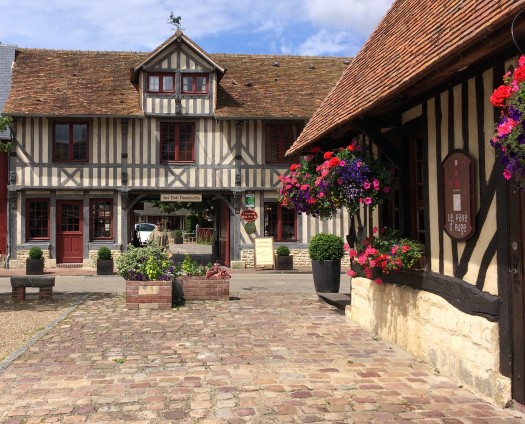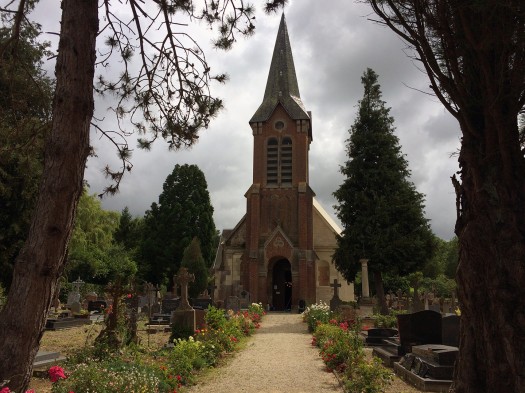A Placemaking Journal
Beuvron-en-Auge: 15th century town planning stands the test of time
 Every month or so, we add to our collection of lessons from livable places. These are the neighbourhoods where walking the streets and looking carefully at the urban forms provide insights into what makes for lovability over time. Today, I’d like to consider Beuvron-en-Auge, deemed one of the most beautiful villages in France by Les Plus Beaux Villages de France. In the heart of cider country, the half-timber construction and picturesque Norman streets suggest a timeless beauty that belies the recent struggle for historic preservation and restoration.
Every month or so, we add to our collection of lessons from livable places. These are the neighbourhoods where walking the streets and looking carefully at the urban forms provide insights into what makes for lovability over time. Today, I’d like to consider Beuvron-en-Auge, deemed one of the most beautiful villages in France by Les Plus Beaux Villages de France. In the heart of cider country, the half-timber construction and picturesque Norman streets suggest a timeless beauty that belies the recent struggle for historic preservation and restoration.
In the early 1970’s, many of the village buildings had been “updated” and cloaked in modern concrete. 15th through 17th century structures had been turned into a “sea of blurred shabby architecture.” Fortunately, Mayor Michel Vermughe turned it all around, with vision, passion, and heritage funds to restore village character. All images are clickable for a larger view, and have CreativeCommons ShareAlike License with Attribution to Hazel Borys.
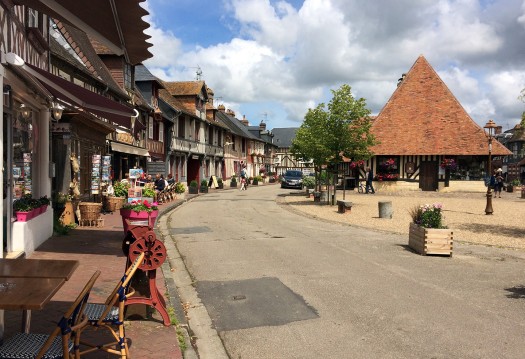
The heart of the village is named after the visionary mayor, Place Michel Vermughen, seen to the right in front of the market hall.
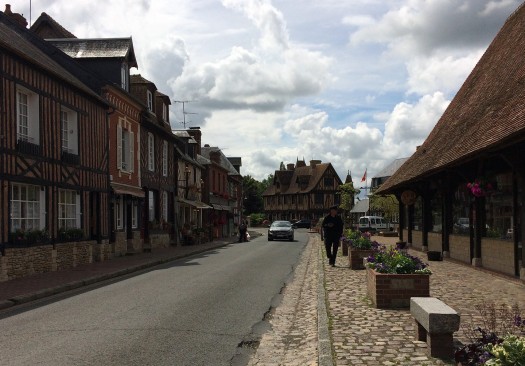
This enjoyable sense of enclosure cannot happen in places where land use laws do not allow for zero front setbacks, zero side setbacks, and skinny streets.
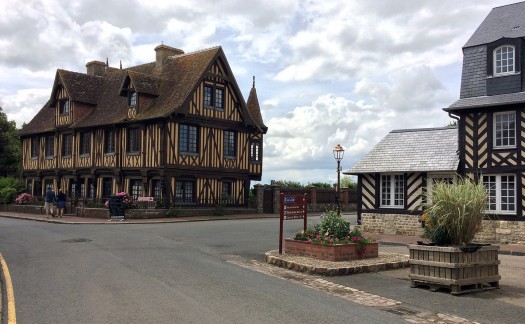
Boule d’Or (to the left) is a 15th century carriage house, showing that the greenest buildings are lovable enough to stand the test of time.
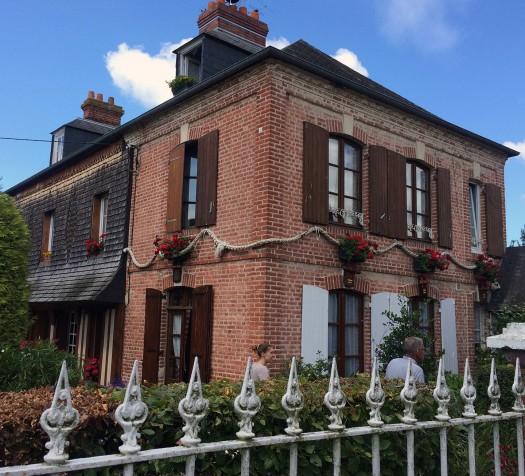
Almost every structure in the heart of the village is attached. The private realm shapes the public realm into a series of outdoor rooms and gathering places.
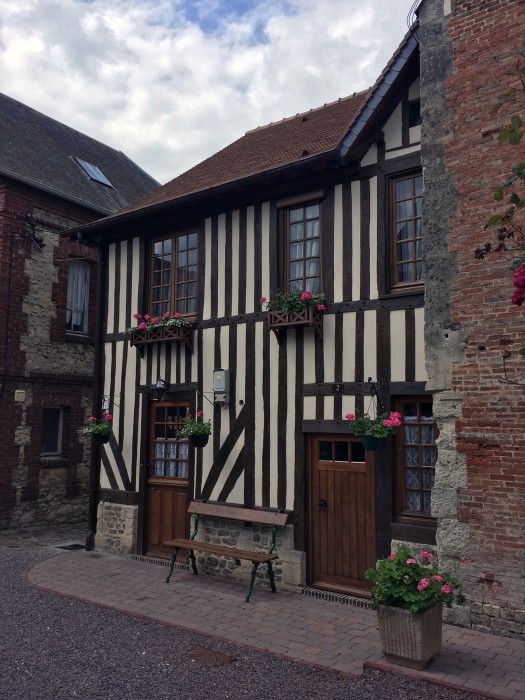
Half-timbered architecture speaks to being a center for trade and craftsmen for centuries.
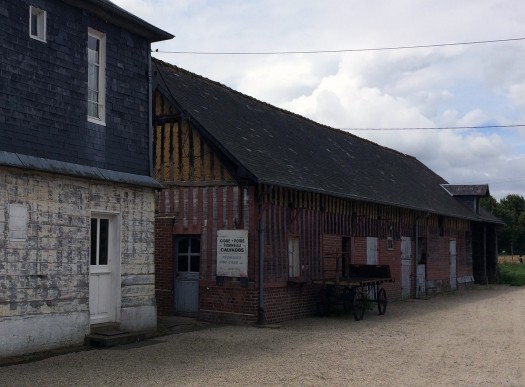
Local specialties of Beuvron cider and cheese integrate agriculture into the heart of the village, delivering agricultural urbanism.
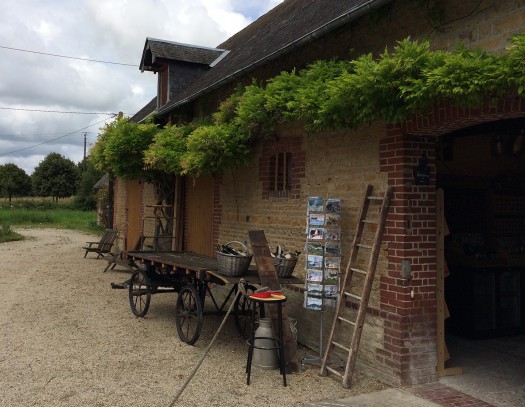
The people habitat is so satisfying that it has become an essential part of the village brand, drawing people from around the world to visit.
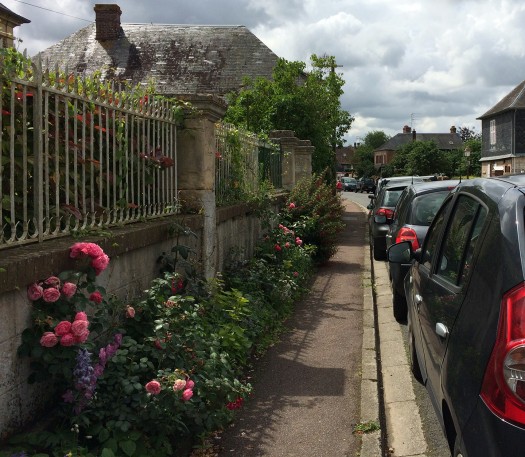
Biophilia, or the love of living systems, thrives here.
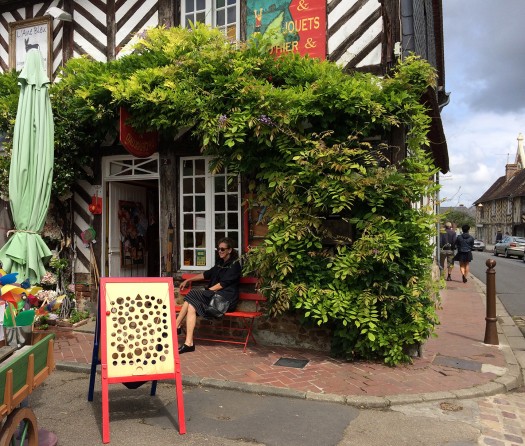
A delightful mixture of compatible uses provides significant pedestrian propulsion.
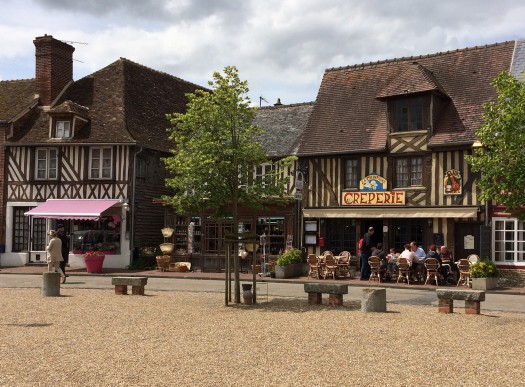
Last but not least, if you make your way to this little village in Normandy, make sure to visit the crêperie La Colomb’auge for excellent food and beverages.
Often when North American urbanists look to Europe for inspiration, we hear complaints that these stories have little relevance within our political and cultural landscape. However, the Beuvron-en-Auge story reminds me of Charleston, South Carolina, with respect to what a visionary mayor can accomplish.
Beuvron-en-Auge Mayor Michel Vermughe was born in 1923 and served as mayor from 1971 to 1996. Charleston Mayor Joe Riley was born in 1943 and was mayor from 1975 to 2016. Both were handed communities suffering from the flight to suburbs and highways. Each used their tenure as mayor, of 25 and 40 years respectively, to restore livability and lovability.
When the young Mayor Joe Riley went to Europe soon after taking office to learn from livable urbanism, he observed:
I was seeing cities where the public realm was accorded the highest priority, and that the citizens revered that. Beauty has no economic litmus test. It’s a basic human need and instinct.”
At the end of this great Architect magazine article on Joe Riley, the hour-and-a-half presentation from Andrés Duany deals specifically with how to realize these sorts of livable places. Most of his advice applies to both sides of the Atlantic. He points out that many of the “problems that loom very large are actually very small,” and can be dealt with through land use law reform. Andrés encourages each city or town to carefully consider their brand, and then ensure the land use laws and building codes contribute to that brand, instead of eroding and destroying it.
If PlaceShakers is our soapbox, our Facebook page is where we step down, grab a drink and enjoy a little conversation. Looking for a heads-up on the latest community-building news and perspective from around the web? Click through and “Like” us and we’ll keep you in the loop.


